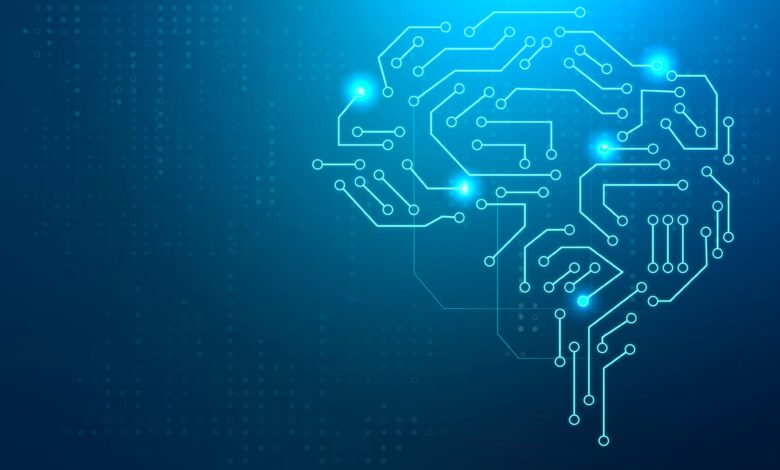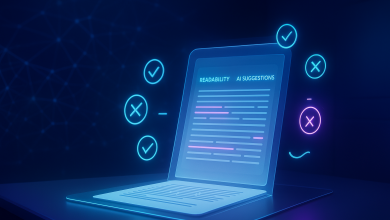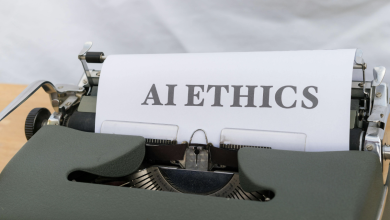
When artificial intelligence (AI) first hit the general public, people’s opinions were quite divided. Some thought it was a brilliant way to automate tedious tasks and become more productive in their lives, while others viewed it as a threat to jobs and human creativity. To be fair to the skeptics, AI being that accessible and widespread was a total surprise, which made it seem like uncharted territory. But after a few years of AI tools becoming a part of everyday life, the narrative has shifted. Now, there’s less fear of it taking over the world and more acceptance that it probably won’t start plotting against us.
It’s more about AI’s potential and whether it has a net positive impact on how we live and work, or a negative one. As people tend to stand on one side of the spectrum or the other, perhaps the key is using AI as a partner that extends rather than threatens our abilities.
Unlocking Human Potential with AI
The idea that AI is here to take over everything we do is certainly an exaggeration of the truth. The reality is that AI works best as a tool to scale our efforts and tackle the busywork that no one wants to waste time on. Typically, it’s about employing it to handle time-consuming, data-heavy, or repetitive tasks like sorting files or analyzing sales data. That way, humans can focus on the important stuff, like exercising judgment and being creative.
Tasks that used to take people days, weeks, or months can now be handed over to AI and completed in seconds or minutes. The sheer speed at which it can deliver results boosts productivity and frees up time for higher-level thinking and doing—all the uniquely human traits AI can’t replicate.
Expanding Creativity Through AI
While AI is usually associated with speed, efficiency, and “doing the job for you,” it can actually amplify human creativity. In industries like film, fashion, and design, for example, AI can explore possibilities at lightning speed, letting humans focus on what gives work meaning. For those in fashion, AI can simulate variations and patterns to speed up the iteration process. Musicians can use AI to suggest chord progressions or instrumental combinations and retain the rest of the creative decision-making. Most notably, writers can use AI to draft everything from marketing copy to product descriptions and refine the most effective outputs.
Because creative industries are so inherently human, they’re the most irreplaceable, with people shaping the context, emotional impact, and meaning of everything that’s produced.
Making Healthcare Smarter with AI
In healthcare, too, AI will never replace the human touch. Doctors and nurses need to connect with patients, exercise empathy, and make ethical treatment choices based on insight gained from years of training and experience. Yet there are many areas where AI is transformative.
Predictive healthcare units often use AI to analyze data, anything from lab results to patient histories and beyond. Doctors can then intervene and make recommendations more proactively and carefully. In radiology, AI algorithms can scan images, including X-rays, to identify abnormalities that people might miss, and then offer diagnoses and treatment options as next steps. The administrative aspects of healthcare especially benefit from AI, as it can deal with scheduling, billing, and management, allowing workers to spend less time on paperwork and more time interacting with patients.
Curating Fun with AI Recommendations
AI isn’t only useful in serious settings, either. It can even improve how we experience fun and entertainment. The most recognized use of AI is often in the algorithms behind the content we see on social media or on streaming platforms. After analyzing what we tend to watch or listen to, AI can suggest relevant content tailored to our interests, helping cut through the noise of endless options.
If we look at the casinos.com free slot collection, for instance, AI can look at trends and player behavior to recommend games they might enjoy. It could highlight new titles or even create a personalized home page so the user can find something that appeals to them. And this doesn’t take away the agency of the player to decide what they want to play and how much they want to spend but instead offers a more enjoyable and rewarding way to play.
Similarly, in music streaming, AI can curate entire playlists and suggest new tracks, but listeners still have the final say in what they actually listen to.
Business Powered by Human-AI Partnership
Within the business sphere, AI harnesses the power of machines and data to empower humans. AI can quickly analyze massive datasets, whether in marketing or supply chain management, to uncover insights that would take humans forever to find on their own. The sheer scale and complexity of these business applications illustrate how well AI excels at processing, while humans put that extracted information into action.
The financial sector uses AI to detect anomalies and keep customers safe, and e-commerce businesses can forecast demand and flag any disruptions in advance. All these proactive and detail-oriented applications show how AI supports humans in making faster and more informed decisions.
What Does the Future of Work Look Like?
We’re starting to get to a place where the future of work isn’t about humans versus machines anymore, but more so about humans and AI working harmoniously together. Across industries, AI is proving that it can handle scale, complexity, and repetition, enabling humans to become better storytellers, curators, and strategists in the long run.




